Key Takeaways
- Unified AI agent tooling. OpenAI's AgentKit provides integrated tools for building agent workflows.
- Improved AI evaluation capabilities. New features streamline agent testing and performance measurement.
- Developer productivity impact. Developers and enterprise teams can deploy reliable agents faster, improving collaboration and reducing launch times.
Sam Altman, at the 2025 DevDay opening, announced OpenAI's new integrated suite of tools for building, deploying and optimizing AI agents. According to company officials, the toolkit addresses fragmentation issues in agent development by combining visual workflow design, data connectivity and UI components.
The company claims AgentKit builds upon its Responses API released in March, offering a more streamlined approach to agent creation. Several early adopters report significant time savings and efficiency gains when using the new agentic tools.
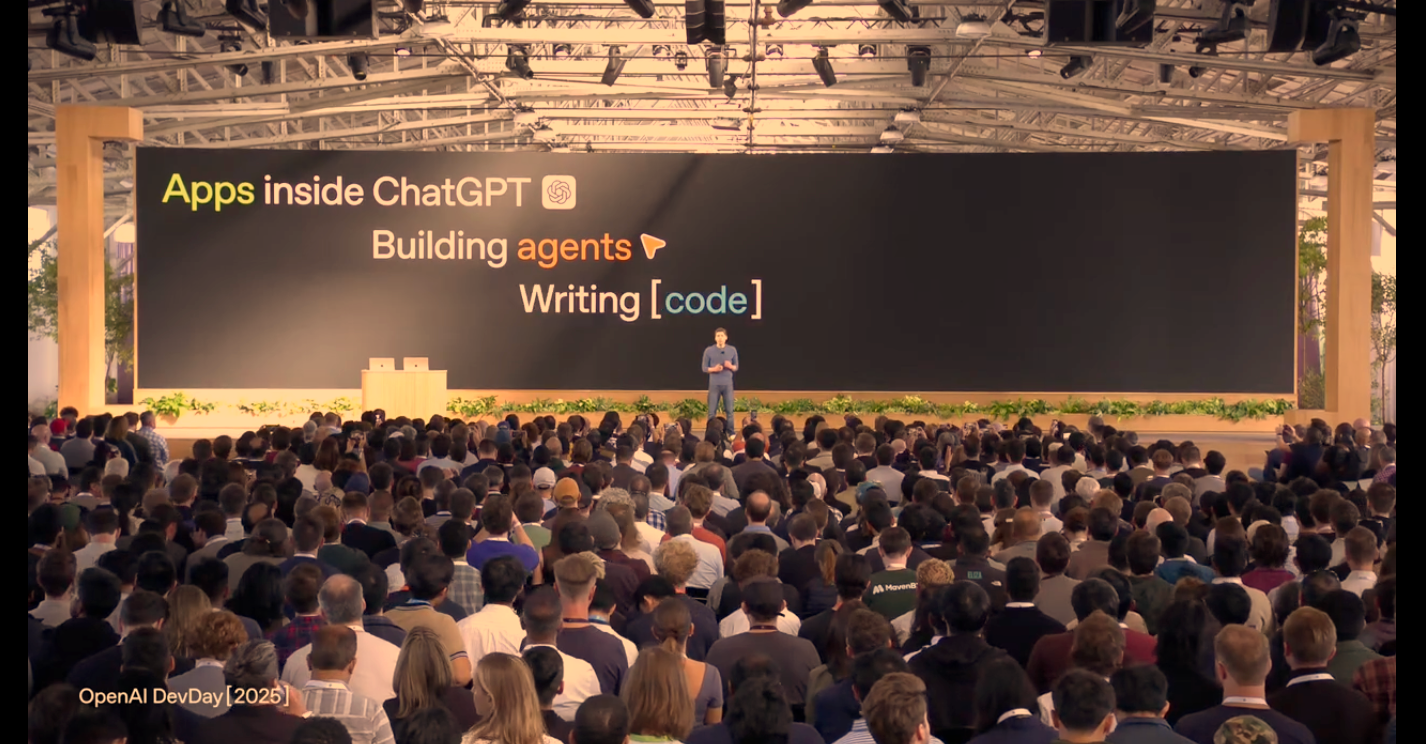
Table of Contents
- Enterprise Software Enters the Agentic AI Age
- OpenAI AgentKit Feature Breakdown
- AgentKit in Action: How It Works
- AgentKit Release Timeline and Availability
- About OpenAI: Mission, Tools and Enterprise Focus
Enterprise Software Enters the Agentic AI Age
"At Bain & Company, we developed a multi-layer agentic development and evaluation strategy. By leveraging OpenAI’s evals, we are already seeing a 25% efficiency gain in our methodology through more efficient dataset curation, improved prompt optimization, and automated trace validation."
- Company Officials, Bain & Co.
The result of these efforts is a new paradigm where developers transition from coders to conductors, orchestrating AI systems that make autonomous decisions and perform complex tasks. The market is converging around applications that turn data into action and data that fuels productivity.
Some companies have already introduced tools that allow teams to design and deploy AI agents for workflows across marketing, operations, IT and HR. Asana, for example, debuted its AI Studio in late 2024. Tools like these aim to reduce the 53% of time employees spend on low-value busywork, according to Asana's research.
Early winners in this space will likely include companies with well-defined workflows and low-code platforms that enable rapid adaptation. The competitive advantage will belong to those who reduce friction, enable automation and enhance knowledge discovery at scale.
Related Article: OpenAI Doesn't Understand Education. That's a Big Problem.
OpenAI AgentKit Feature Breakdown
| AgentKit Capability | Description |
|---|---|
| Agent Builder | Visual canvas for creating multi-agent workflows with versioning |
| Connector Registry | Central admin panel for managing data sources across OpenAI products |
| ChatKit | Tools for embedding customizable chat interfaces in applications |
| Enhanced Evals | New testing features including datasets and trace grading |
| Guardrails | Open-source safety layer to protect against unintended behaviors |
| Reinforcement Fine-Tuning | Tools to customize reasoning models with custom criteria |
"Agent Builder transformed what once took months of complex orchestration, custom code and manual optimizations into just a couple of hours. The visual canvas keeps product, legal and engineering on the same page, slashing iteration cycles by 70% and getting an agent live in two sprints rather than two quarters.”
- Company Officials, Ramp
AgentKit in Action: How It Works
Agent Builder is a visual canvas for composing agents, and includes drag-and-drop nodes, connecting tools and configurations for custom guardrails. It also supports preview runs, inline eval configuration and full versioning.
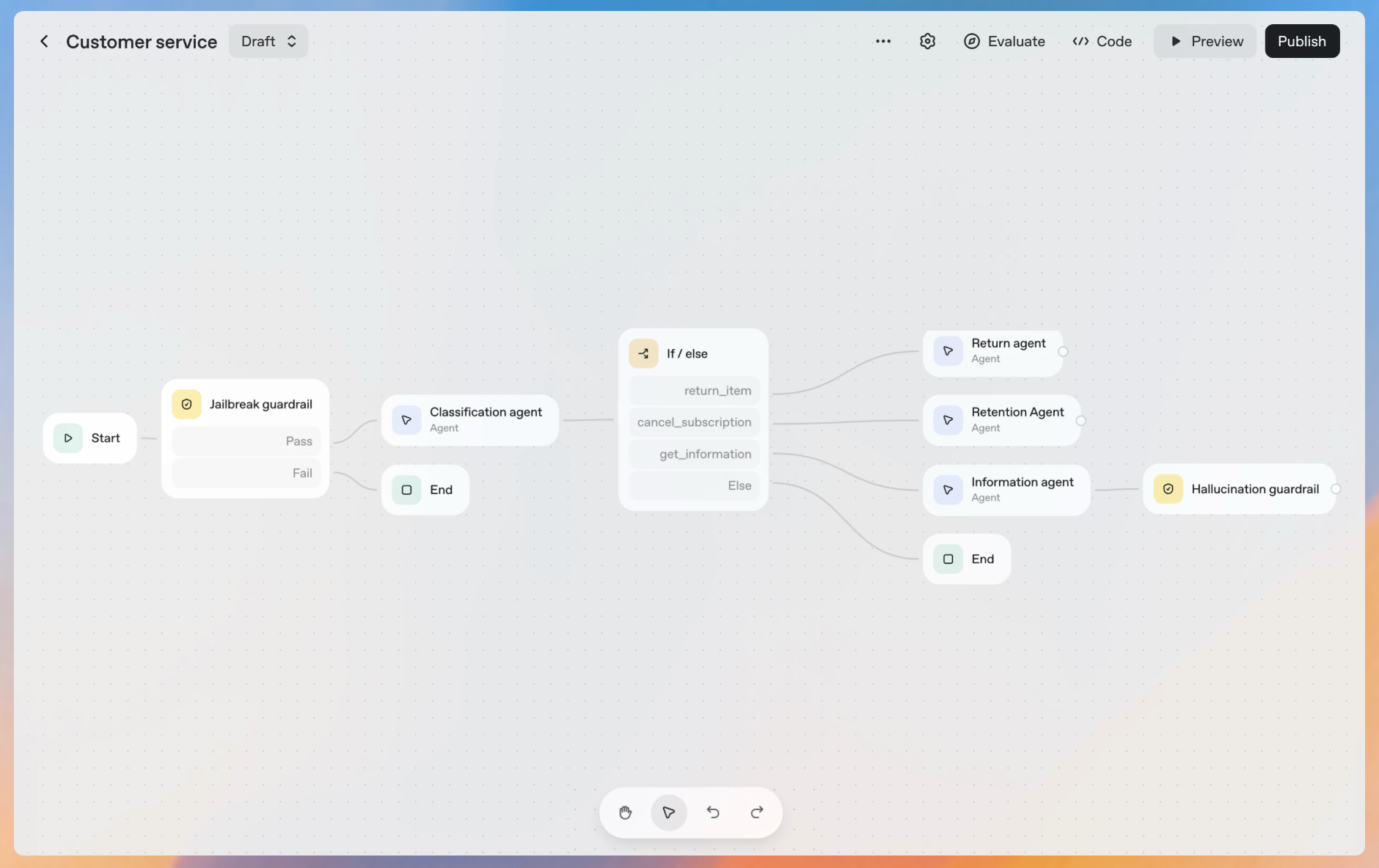
Automated prompt optimization generates improved prompts based on human annotations and grader outputs.
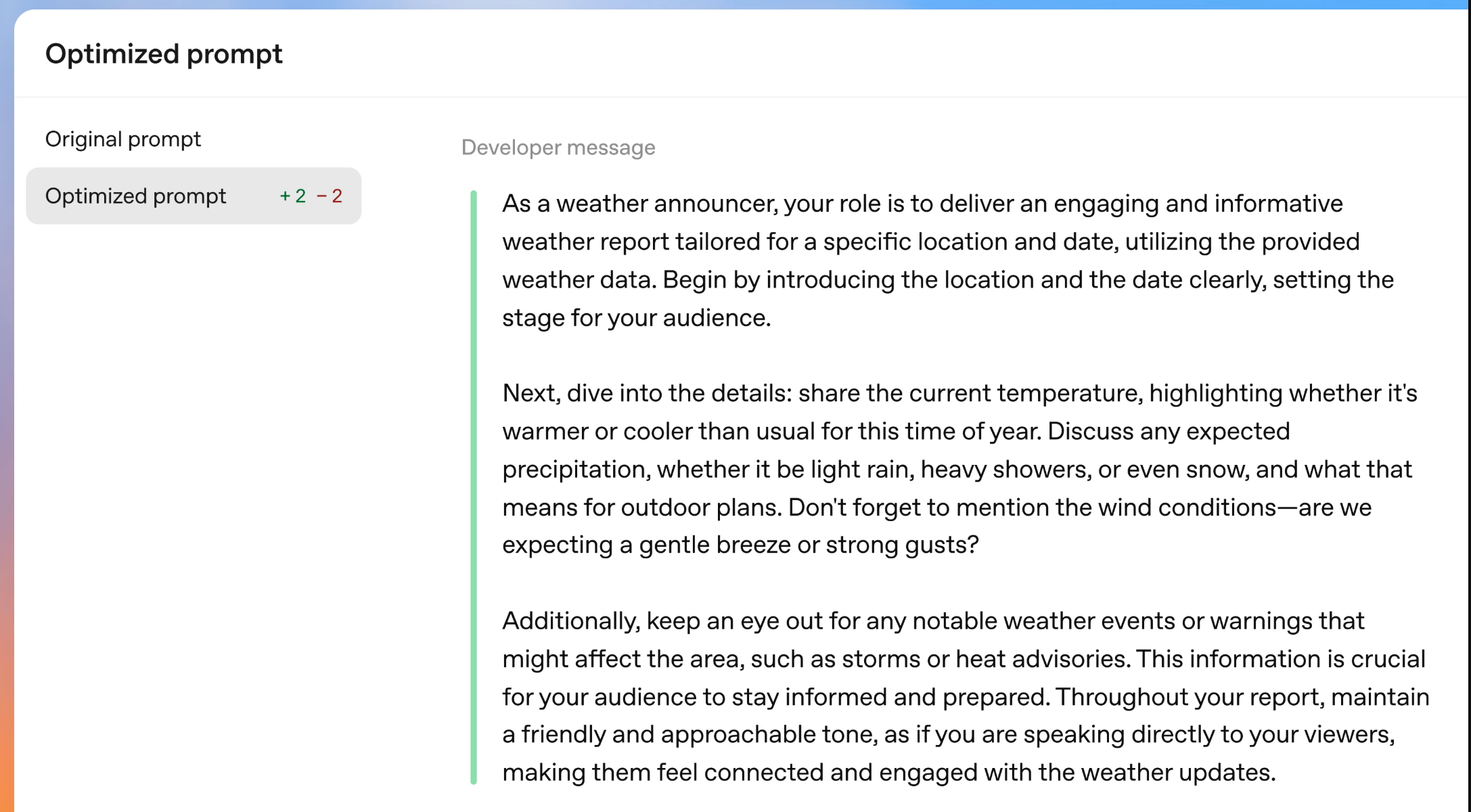
Using Datasets, users can rapidly build agent evals from scratch and expand them over time with automated graders and human annotations..
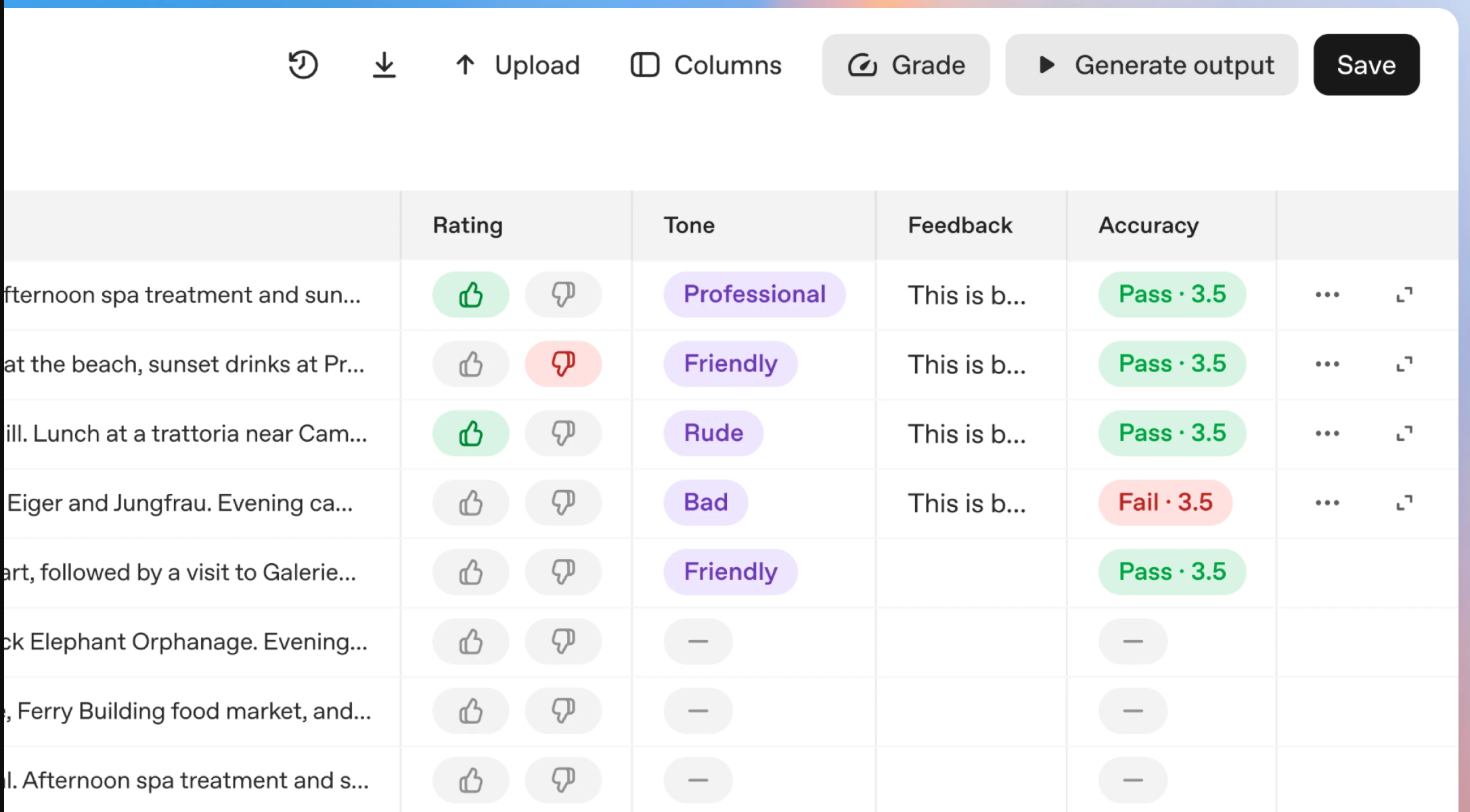
With trace grading, enterprises can run end-to-end assessments of agentic workflows and automate grading to pinpoint shortcomings.
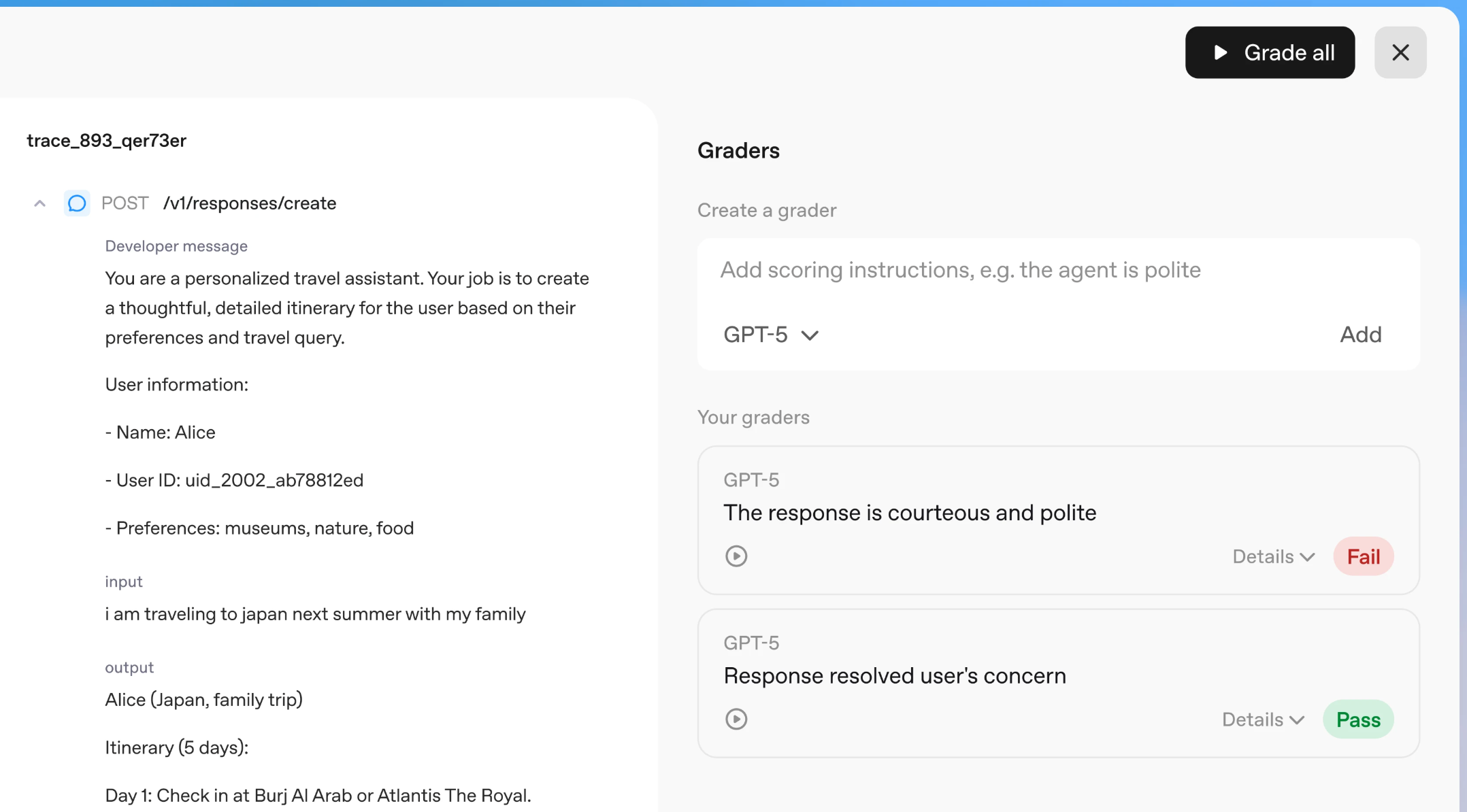
AgentKit Release Timeline and Availability
As of October 6, ChatKit and the new Evals capabilities are available to all developers.
Agent Builder is available in beta, and Connector Registry is beginning its beta rollout for some API, ChatGPT Enterprise and ChatGPT Edu customers with a Global Admin Console. The Global Admin console is a pre-requisite to enabling Connector Registry.
All of these tools are included with standard API model pricing. According to OpenAI, it will also soon add a standalone Workflows API and agent deployment options to ChatGPT.
Related Article: Trusting AI Agents at Work: What Employees Really Want
About OpenAI: Mission, Tools and Enterprise Focus
Founded in December 2015 in San Francisco, California, OpenAI targets enterprise technology leaders, developers and researchers seeking advanced artificial intelligence solutions.
OpenAI's Platform Offerings
The tech company's key offerings include large language models such as GPT, image generation models like DALL-E and a suite of developer APIs for integrating AI into business applications. The company claims its models enable natural language processing, content creation and data analysis at scale. Its tools are used to automate workflows and drive new product development.
OpenAI's Market Strategy
Industry analysts describe the company as a significant provider in the generative AI sector, serving a broad range of industries from technology and finance to healthcare and education. Its customer base includes large enterprises, software vendors and startups seeking to embed AI into products or services. The company has attracted notable investment from technology firms and institutional investors, supporting its ongoing research and commercial expansion.
